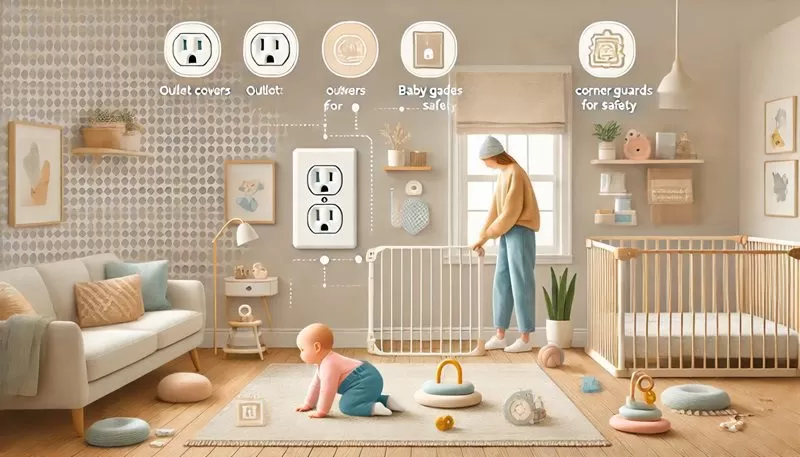Table of Contents
Baby Proofing Home Safety
When you bring a baby home, ensuring their safety becomes a top priority. Every parent knows the importance of Baby Proofing Your Home and creating a safe environment for their child, especially as babies grow and start exploring the world around them. In this guide, we’ll walk you through babyproofing tips, highlight essential products, and help you create a safe space for your little one. We’ll also share insights into how some safety rules may evolve as your baby grows, and we’ll provide Your Ultimate Baby Proofing Checklist to make sure you don’t miss a thing.
When it comes to baby-proofing, it’s essential to be thorough and consider every potential hazard in your home. From securing heavy furniture to installing safety gates, there are numerous precautions that parents should take to ensure a safe environment for their little one. For a complete guide on baby-proofing your home, be sure to check out this Comprehensive Home Safety Guide from Safe Kids Worldwide. Implementing these safety tips can give you peace of mind as you create a secure space for your child.
Assessing Your Space: Start with a Baby’s Eye View
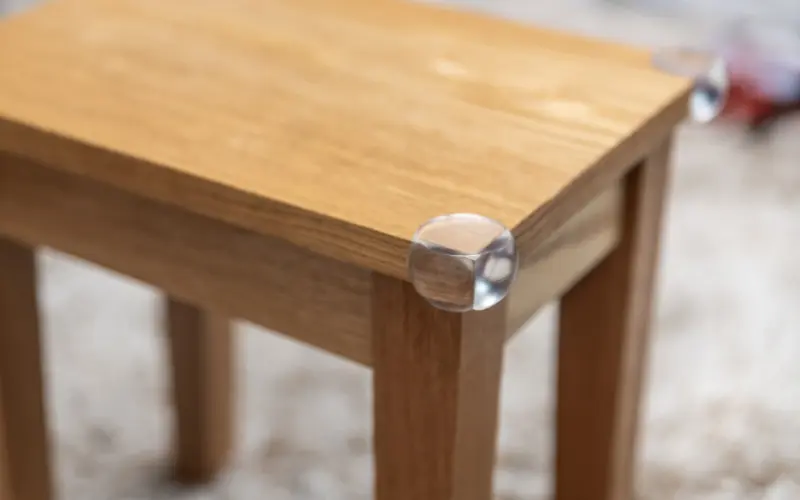
Before jumping into babyproofing, it’s crucial to assess your home from your baby’s perspective. Get down on your hands and knees to see the world as they do. You’ll notice potential hazards like sharp corners, dangling cords, and reachable cabinets that might not be obvious from an adult’s point of view.
Here are some basic areas that should be checked and secured:
- Furniture: Anchor all heavy furniture like bookshelves and TV stands to the wall.
- Outlets: Use plug covers to prevent curious fingers from poking into electrical outlets.
- Corners and Edges: Install corner guards on tables and furniture with sharp edges.
Products like our Corner and Edge Protectors are a great starting point for keeping your baby safe from harmful furniture edges.
Your Ultimate Baby Proofing Checklist
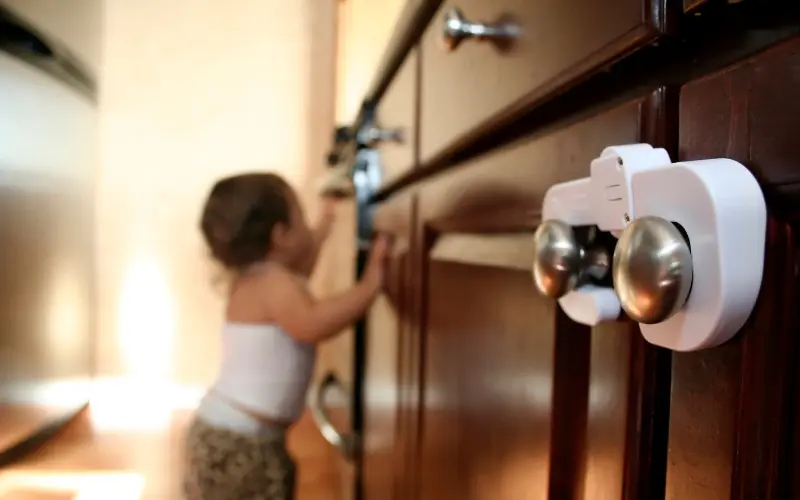
To help ensure nothing gets overlooked, here is Your Ultimate Baby Proofing Checklist:
- Safety Gates: Install gates at the top and bottom of stairs and in doorways that lead to unsafe areas.
- Cabinet Locks: Use cabinet locks to keep dangerous items out of reach, especially in the kitchen and bathroom.
- Door Stops: Prevent fingers from getting pinched by using door stops or guards on all doors.
Having the right tools can make babyproofing easier. For example, our Multi-Purpose Safety Locks are perfect for cabinets, appliances, and drawers, keeping dangerous items securely locked away.
Babyproofing Tips for Every Stage of Mobility
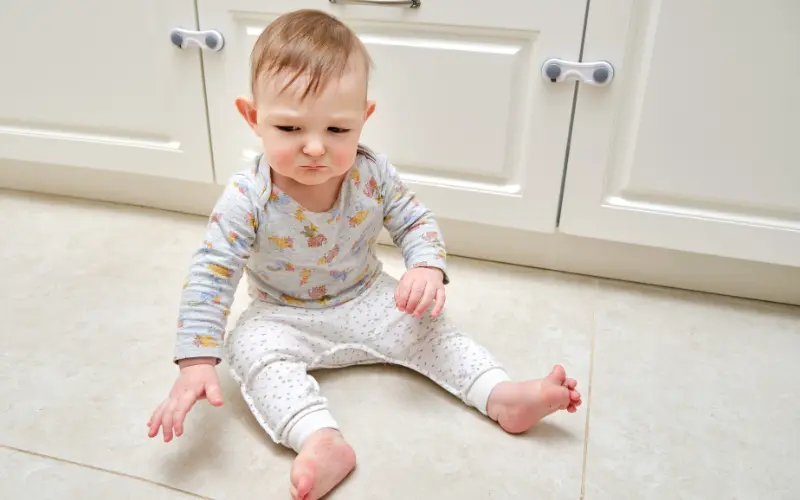
As your baby grows, their mobility increases, and so do the risks. It’s important to adapt your babyproofing efforts as they move from crawling to walking, and eventually running. Here are some Babyproofing Tips for Every Stage of Mobility:
- Crawling: At this stage, babies are mostly interested in low-level hazards. Secure anything at their level, such as low cabinets, electrical cords, and accessible trash bins.
- Walking: Once your baby starts walking, they’ll have access to a lot more areas. Now is the time to double-check that safety gates are installed at staircases and that breakables are moved to higher shelves.
- Climbing: Toddlers love to climb! Ensure that heavy furniture is anchored securely to the wall, and consider using window guards to prevent falls from high places.
Our Safety Gates are designed for easy installation and provide a secure barrier to keep babies away from hazardous areas.
9 Common Safety Rules Parents Can Eventually Let Go Of
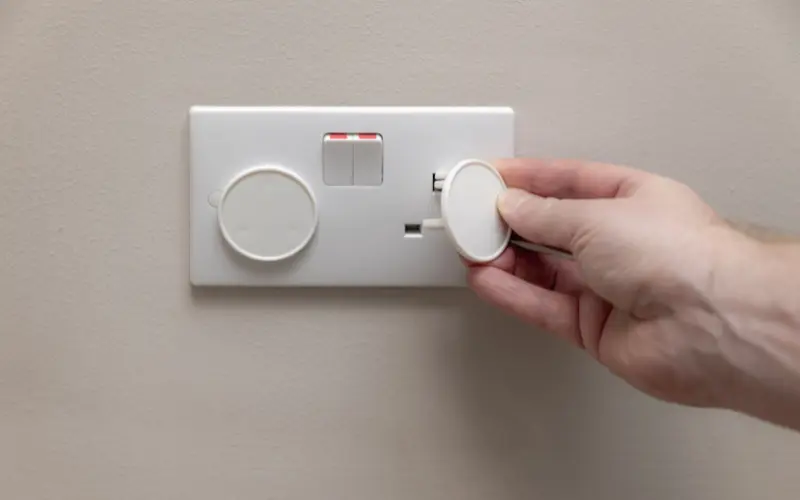
While safety is critical during a baby’s early years, there are some safety rules that parents can gradually ease up on as their child grows. Here are 9 Common Safety Rules Parents Can Eventually Let Go Of:
- Plug Covers: Once your child understands not to touch outlets, you may not need plug covers on every outlet.
- Baby Gates: As your child becomes more confident navigating stairs, you can start removing gates.
- Sharp Object Locks: Eventually, your child will learn what’s dangerous and won’t need every cabinet or drawer to be locked.
Remember that while these rules can be relaxed over time, constant supervision is still key to keeping your child safe.
Special Attention Areas: Kitchen and Bathroom
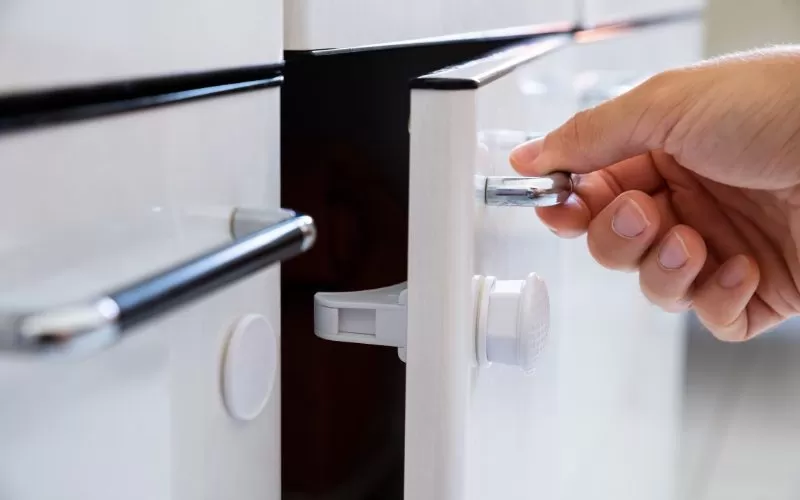
The kitchen and bathroom are two areas that require extra attention when babyproofing. In the kitchen, securing cabinets with cleaning supplies and sharp objects is a must. You’ll also want to keep hot appliances and utensils out of reach. Meanwhile, in the bathroom, you should install locks on medicine cabinets and ensure that toilets are childproofed with latches to prevent accidents.
For your kitchen and bathroom, our Cabinet Safety Locks are durable and easy to install, helping you keep these high-risk areas secure.
Babyproofing Tips for a Safer Play Area
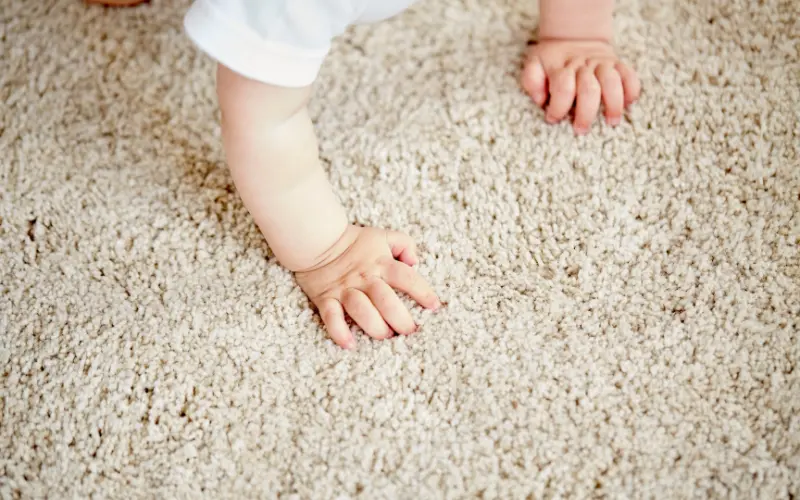
Creating a designated play area can give your child the freedom to explore in a controlled environment. Ensure the play area is free from small toys that could be choking hazards, and use soft mats or rugs to cushion falls.
Here are some additional babyproofing tips for your play area:
- Install Soft Flooring: Choose mats that are soft yet durable to provide extra cushioning in case of falls.
- Secure Toys and Bookshelves: Anchor any shelves or large toy storage units to the wall to prevent tipping.
- Limit Access: Consider setting up a baby gate around the play area to create boundaries for your child.
Your Ultimate Baby Proofing Checklist Recap
Ensuring your home is safe for your baby involves using the right products and following a strategic approach. Your Ultimate Baby Proofing Checklist should include safety gates, cabinet locks, and furniture anchors to minimize risks. As your baby grows, be sure to adjust your babyproofing methods to match their developmental stage.
Babyproofing Tips for Every Stage of Mobility are essential as babies move from crawling to walking and eventually climbing, making your home safer as they become more adventurous.
Conclusion: Stay Safe, Stay Prepared
Babyproofing your home is one of the most important steps you can take to ensure your child’s safety. From using corner protectors and safety gates to childproofing cabinets and electrical outlets, there are plenty of ways to safeguard your home. Always reassess as your baby grows, making changes to match their mobility. And as you go through Your Ultimate Baby Proofing Checklist, don’t forget to ease up on certain safety rules as your child gets older.
To make your babyproofing journey easier, check out our Corner and Edge Protectors, Multi-Purpose Safety Locks, and Safety Gates for peace of mind. With these tools, you’ll be well-equipped to handle all the stages of your child’s development, ensuring a safe and happy home.

